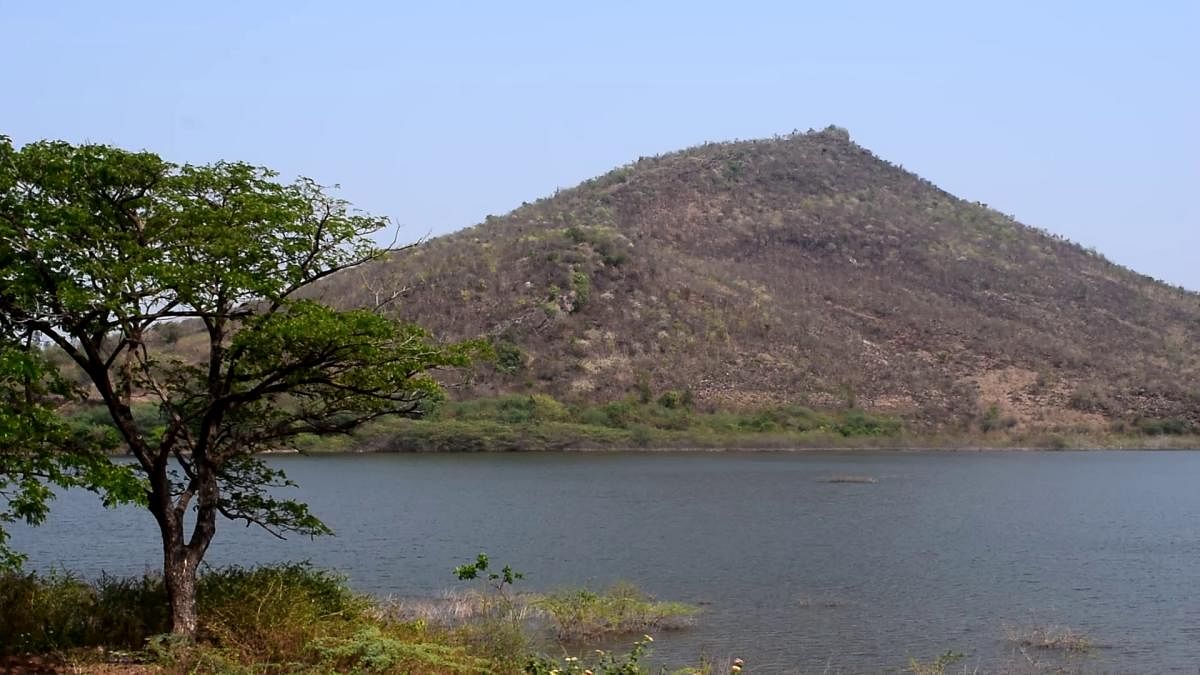
Before 2000, the sight of scores of villagers transporting firewood in bullock carts was common in and around the Karadi Kolla forest area at Rattihalli taluk in Haveri district. Logs were also transported illegally at night.
“It was common to see forest fires in the area those days,” Siddappa Dandin, a resident of Guddada Madapura village, recalls.
“There has been a transformation in the last two decades. Thickets, shrubs and hedges have come up making it difficult for humans to penetrate into the forest. No one dares to enter the forest for firewood. Cutting down trees attracts fine. As a result, we hardly see any incidents of forest fires now,” he adds.
Committee to the rescue
The force behind the transformation is the village forest committee (VFC) of Guddada Madapura. The committee’s efforts have played a vital role in preventing illegal activities in the 1,019-hectare Karadi Kolla reserve forest area.
Forest guard Ashok Karadera says the forest under the Guddada Madapura Gasti area in Hirekerur zone has a large number of Matti (Indian laurel tree), Dindiga (Axle wood) and Arishina Booruga (butter cup tree) trees.
The VFC, called Siddeshwara Grama Aranya Samiti, is known for its works and is among a handful of active
committees in the state. Formed in 2002, it is managed by a team of 11 people.
The team members document trees and keep a watch on hunting and felling activities. Those involved in such activities are brought to the Siddeshwara temple in the village. The villagers levy a fine on them. Sometimes, such persons are handed over to the custody of the forest department.
Person behind the mission
Karibasappa Kaginelli, the VFC president, has been a bridge between the forest department and the villagers. He stresses on community participation.
Right from helping the guards in constructing water ponds in the forests to helping document trees and stopping the poachers, he is a hands-on resource.
Karibasappa’s proactiveness has also put his life in danger.
“It was actually a challenge for us to prevent chopping of big trees, illegal transportation of wood logs, encroachments, mining and wildlife hunting,” says Karibasappa.
“The VFC’s initiatives have helped recharge the groundwater table. There is always a gentle breeze around the temple due to the forest cover,” he says.
Vanasiri Grameena Abhivriddhi Samsthe in Ranebennur was behind the formation of the committee in 2002. It persuaded people in the neighbourhood to form many such committees. Only this committee is active today.
VFCs came into existence as part of the National Forest Policy, 1988, in order to ensure community participation to protect forests.
They work based on the principle of equal share in power, responsibility and benefits. They support communities living near the forest areas in afforestation activities.
The Union government guidelines on June 1, 1990, helped the formation of 65,000 VFCs across 27 states. Today, the VFCs have joined hands with respective states to protect forests spread across 1,50,000 sq km. However, these efforts are successful in just a few areas.
The Karadi Kolla model stands as an example which if emulated can help save our forests and utilise resources sustainably.
(Translated from Kannada by Jagadish Angadi)
